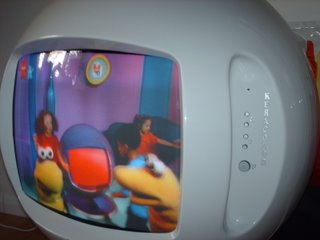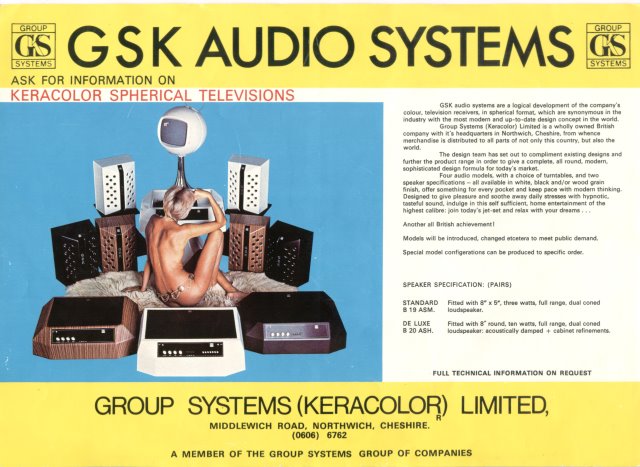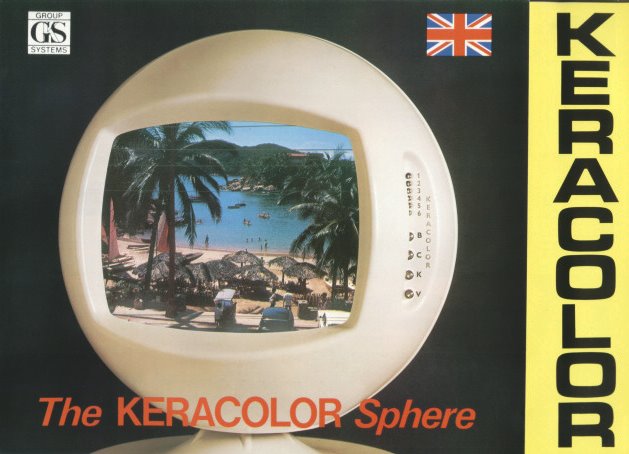
Introducing the New Keracolor Television
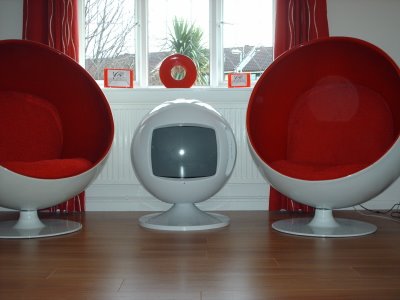
At Keracolor Televisions we produce custom made bespoke Televisions in any colour to order. Keracolor use the original moulds which have been in storage for over 30 years, since the 70's but fitted with modern TV sets.
The Keracolor television is a design icon of the 60's & 70's and is fectured in all of the great design books of this era.
We also have a number of original 70's Keracolor in stock & also produce spares for the originals.

Most people mispell Keracolor by adding a "U" i.e Keracolour.

What is space age design?
For a moment in time, the world was transfixed on where we would be going…..off to the moon and beyond. Politics, culture, communications, technology….all of these were exploding into uncharted areas. And design was transformed too. Furniture, clothing, transportation, automation, communication - nothing would ever be the same again.
Space age design has it’s roots in a popular era most commonly called “Mid-Century Modern design: This type began in the mid 50’s and is best epitomized by the work of Charles Eames and peers, and continued thru the 60’s and perhaps early 70’s as well.
An offshoot of this design trend involved space age influences. The movie “2001” by Stanley Kubrick epitomized the clean, rounded shaped, biomorphic design that held fast in culture for around 8-10 years. Other movies in a similar vein included Woody Allen’s “Sleeper”, the television series “Star Trek” in the US, and the hit “Space 1999” in the U.K.
Featured in many of these films and TV shows were furniture by such famous designers as Vernor Panton, Aero Saarinen, Robin Day, Peter Ghyczy, Arne Jacobsen, Raymond Lowey, Herman Miller & Eera Aarnio to name just a through.
Among the most radical changes to occur were to the electronics of the era. Radios, stereos, turntables, TVs - everything changed, and how it was presented to the “user” made all the difference in the world. In the late 1960’s, TV’s began to change in design. First, the addition of the Saarinen tulip base occurred to many “normal” televisions. Then, the cases themselves become both smoothed on its corners as well as having integrated pedestals as well.

In 1968 a British designer by the name of Arthur Bracegirdle designed and put into production the Keracolor television, the worlds first perfectly spherical TV made from Fibreglass, which was to become one of the greatest design icons of the 20th Century.

Keracolor Hsitory
Designed in 1968 by Arthur D Bracegirdle.
In 1968 Arthur D Bracegirdle broke the traditional mould of television design when he designed one of the great icons off the 20th Century the Keracolor Television.
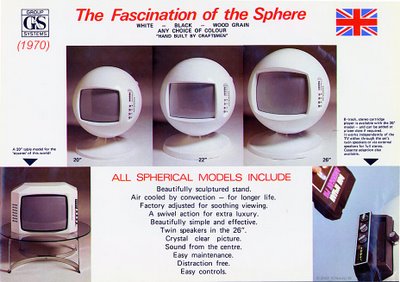
At a time when all other television where uninspiring wooden box the radical new spherical design became an overnight design icon. It has wrongly be reported over the years that the Keracolor shape was inspired by a spaceman helmet after watching the first moon landing or designed to look like the sputnik spaceship. Both of these are strongly disputed by Arthur, “the Television was design in the shape of a sphere, one of the most simplistic & pleasing of all geometric shapes”

"L'Utopie Du Tout Plastique", page 124
"The Sixties" by Phaiddon, page 103 and 113
"TV is King" by Michael Bennett Levy, Page 53 and 54
“Collecting the 60’s” by Madeleine Marsh, page 44
